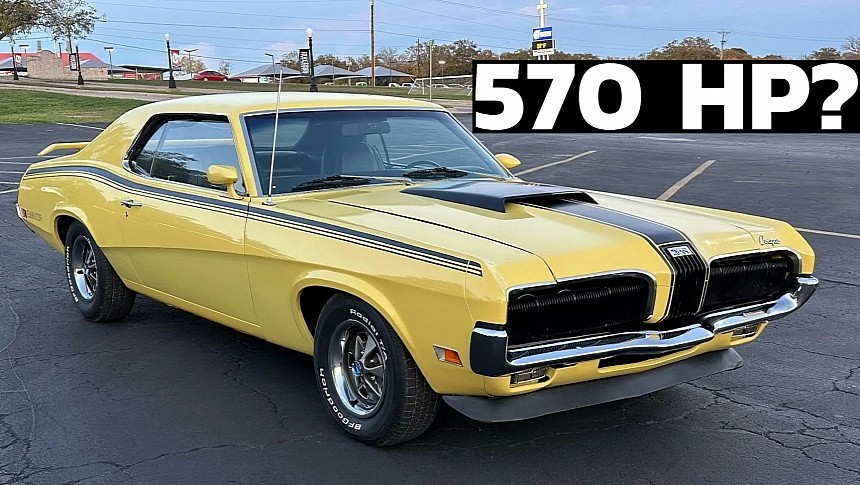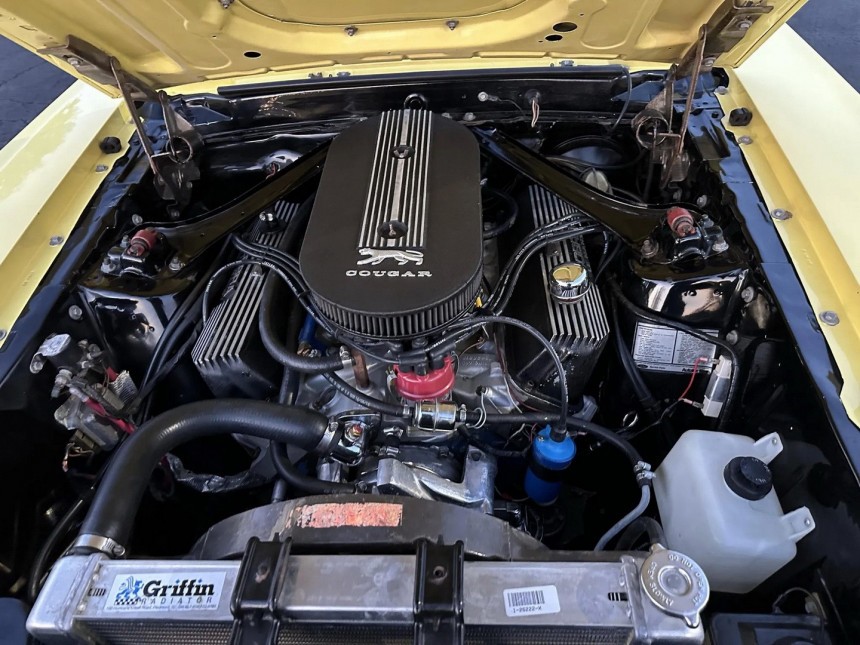Remember back when Ford needed to homologate the Boss 302 engine for SCCA Trans Am regulations? It led directly to the birth of the Mustang Boss 302, which at one point held hands with the Eliminator variant of the Mercury Cougar, itself created as a not-so-subtle attempt to boost sales.
The Eliminator also stood as a direct successor to the Cougar GT, featuring a 2-door hardtop body style as standard, to go with its body-color rear spoiler, blacked-out grille, hood scoop, side stripes, plus a couple more options.
This all took place in 1969, as the following year the Cougar Eliminator adopted the 351C-4V engine as standard, while additional blacked-out exterior trim was made available too. Meanwhile, the carmaker’s signature crest emblem was replaced by a Cougar “running cat” badge, and a passenger-side racing mirror was added.
Additional novelties for the 1970 model year included restyled body side stripes (now running across the entire length of the vehicle), but also a hood stripe, plus several more body colors, including Competition Yellow, which is featured on this particular 1970 Mercury Cougar Eliminator that we found getting auctioned off.
This is one of just 2,268 Eliminators produced for that model year, and it has already undergone a refurbishment back in the late 1990s. It could still use some more TLC (the paint needs some work), but overall, it looks solid.
Aside from the blacked-out grille, this car also comes with concealed headlights and a set of gray 14-inch wheels with 215/70 BFGoodrich Radial T/A tires. The power-assisted disc brakes and competition suspension system are both factory-standard.
The interior is pretty much how you’d expect. You’ve got your black vinyl front bucket seats and rear bench, color-matching dashboard, door panels, and carpeting, plus a Hurst shifter, woodgrain trim, woodgrain steering wheel, heater, all-weather floor mats, and an AM radio.
As for the engine, you’ll be interested to know there’s a replacement 390 ci V8 unit under the hood of this Mercury. It was built by Rhyne Competition Engines, and features a .030” overbore, Clevite bearings, forged pistons, ARP bolts, Crane camshaft and lifters, Edelbrock aluminum cylinder heads, a Griffin aluminum radiator, and Hooker headers, among other mods.
There’s also a Ford 427 dual-quad low-riser intake to go with the dual four-barrel Holley carburetors. Basically, there’s a lot of power going to the rear wheels via the replacement Toploader four-speed manual transmission.
How much power? While they didn’t have the vehicle dynoed, the seller claims that roughly 425-450 horsepower would be a conservative figure. He also said that a best guess would be somewhere in the vicinity of 502 horsepower at the wheels, which actually translates to about 570 horsepower at the crank. So yeah, this thing’s got some serious muscle, even by today’s standards.
This all took place in 1969, as the following year the Cougar Eliminator adopted the 351C-4V engine as standard, while additional blacked-out exterior trim was made available too. Meanwhile, the carmaker’s signature crest emblem was replaced by a Cougar “running cat” badge, and a passenger-side racing mirror was added.
Additional novelties for the 1970 model year included restyled body side stripes (now running across the entire length of the vehicle), but also a hood stripe, plus several more body colors, including Competition Yellow, which is featured on this particular 1970 Mercury Cougar Eliminator that we found getting auctioned off.
This is one of just 2,268 Eliminators produced for that model year, and it has already undergone a refurbishment back in the late 1990s. It could still use some more TLC (the paint needs some work), but overall, it looks solid.
Aside from the blacked-out grille, this car also comes with concealed headlights and a set of gray 14-inch wheels with 215/70 BFGoodrich Radial T/A tires. The power-assisted disc brakes and competition suspension system are both factory-standard.
The interior is pretty much how you’d expect. You’ve got your black vinyl front bucket seats and rear bench, color-matching dashboard, door panels, and carpeting, plus a Hurst shifter, woodgrain trim, woodgrain steering wheel, heater, all-weather floor mats, and an AM radio.
There’s also a Ford 427 dual-quad low-riser intake to go with the dual four-barrel Holley carburetors. Basically, there’s a lot of power going to the rear wheels via the replacement Toploader four-speed manual transmission.
How much power? While they didn’t have the vehicle dynoed, the seller claims that roughly 425-450 horsepower would be a conservative figure. He also said that a best guess would be somewhere in the vicinity of 502 horsepower at the wheels, which actually translates to about 570 horsepower at the crank. So yeah, this thing’s got some serious muscle, even by today’s standards.



























